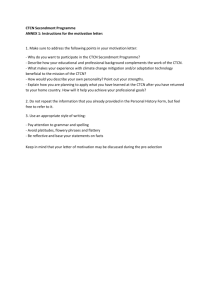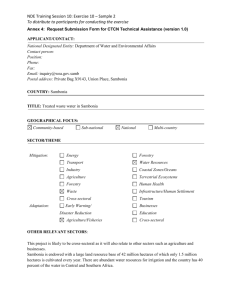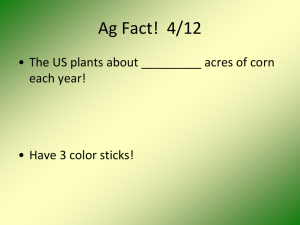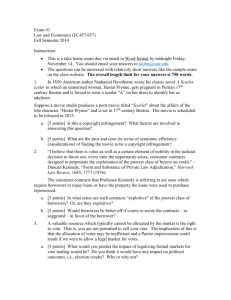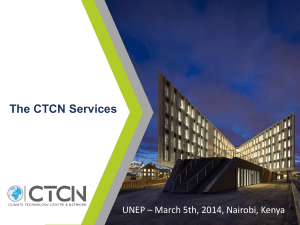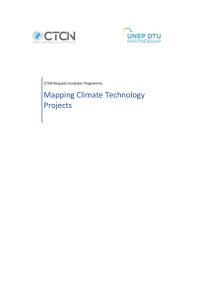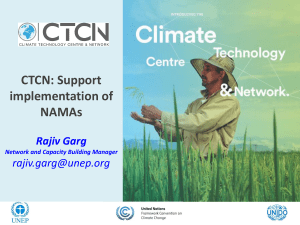13 Guidelines adaptation sample request from proposal
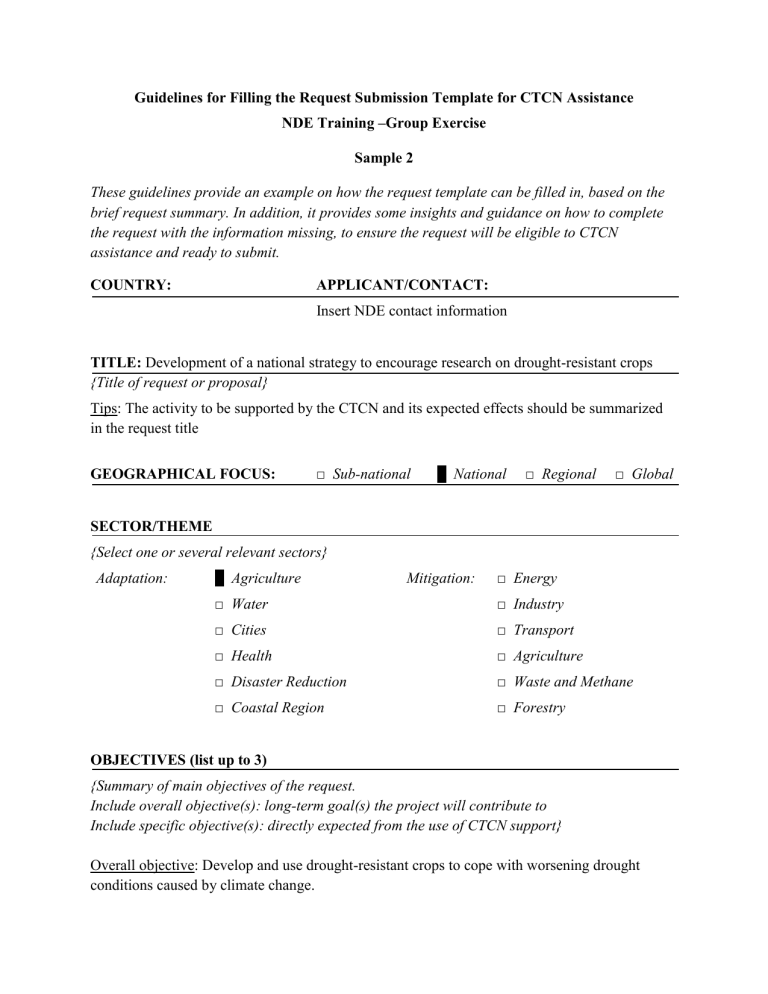
Guidelines for Filling the Request Submission Template for CTCN Assistance
NDE Training –Group Exercise
Sample 2
These guidelines provide an example on how the request template can be filled in, based on the brief request summary. In addition, it provides some insights and guidance on how to complete the request with the information missing, to ensure the request will be eligible to CTCN assistance and ready to submit.
COUNTRY: APPLICANT/CONTACT:
Insert NDE contact information
TITLE: Development of a national strategy to encourage research on drought-resistant crops
{Title of request or proposal}
Tips: The activity to be supported by the CTCN and its expected effects should be summarized in the request title
GEOGRAPHICAL FOCUS:
□ Sub-national □ National □ Regional □ Global
SECTOR/THEME
{Select one or several relevant sectors}
Adaptation:
□ Agriculture
□ Water
□ Cities
□ Health
□ Disaster Reduction
□ Coastal Region
Mitigation:
□ Energy
□ Industry
□ Transport
□ Agriculture
□ Waste and Methane
□ Forestry
OBJECTIVES (list up to 3)
{Summary of main objectives of the request.
Include overall objective(s): long-term goal(s) the project will contribute to
Include specific objective(s): directly expected from the use of CTCN support}
Overall objective: Develop and use drought-resistant crops to cope with worsening drought conditions caused by climate change.
Specific objective: Using the strategy developed with CTCN assistance, engage national, regional and international institutions, and undertake joint research and development with agricultural research institutions in developing countries.
Tips: The overall objectives refer to the broader benefit that the CTCN will contribute to. The specific objectives refer to the direct effect expected from CTCN assistance.
BACKGROUND INFORMATION AND CONTEXT (up to 1 page)
{Background information on the existing conditions surrounding the request
Main problems and difficulties the request aims to address
Brief description of any previous or ongoing related work being undertaken (nationally or regionally) and any bottlenecks or success stories encountered
If necessary, attach relevant documents}
In country Y, rainfall variability is the main constraint for crop production. Average rainfall in the country is less than 800 millimetres per annum, and the country’s food production is mostly based on rain-fed agriculture.
A challenge for country Y is to install technologies that will help to build the resilience of agricultural production under worsening drought conditions and shifting rainfall patterns.
Country Y has an agricultural research institute that conducts research on crop types and provenances and produces seeds (including hybrid seeds) for use by local farmers. The institute operates with very limited human and technical resources to cope with the huge demands for the development of new varieties of crops for use under the expected climatic conditions. The institute recognizes the urgent need to partner with other institutions in the research and development of drought-resistant crops.
Additional information required:
Specific efforts directly related to droughts resistant crops, from the institute or another agency to put the emphasis the context on this specific topic.
Information on previous droughts and consequences on the agricultural sector (loss of crops, production decrease, farmers livelihood threatened, etc.) to explain the scope of the problem, and understand how the request aims to address it.
ALIGNMENT WITH NATIONAL DEVELOPMENT PRIORITIES (up to half a page)
{Justification of how the request is in line with national plan and priorities
{Please reference existing national documents (i.e. national development plan, poverty reduction strategy, climate change priorities, technology plans and strategies, etc.)}
Huge demands for the development of new varieties of crops for use under the expected climatic conditions.
Additional information required:
Identify what national priorities the request answers to. The information can be found in national and regional plans and strategies officially endorsed by the government (National agricultural strategy, climate change plans, food security strategy, etc.).
REQUEST PROCESS AND SELECTION (up to half a page)
{Explain how the request was selected (organization(s) that initiated the process, stakeholders involved, consultations or meetings conducted, etc.)}
Information required:
How, why and when the country decided to submit this request
Provide information on national consultations, high-level meetings, recommendations from previous project or assessment, official statement, etc. that relates to the decision of submitting a request.
STAKEHOLDERS
{Please list which institutions, organizations, and private sector actors would be key in carrying out the activities requested and indicate their role in the project implementation.
List direct and final beneficiaries of these activities}
Name Role Category
(Beneficiary or Partner)
Partner and beneficiary Agricultural research institutions
Conducts research on crop types and provenances and produces seeds (including hybrid seeds) for farmers
Additional information required:
Select other institutions (national, regional and/or international) that would be directly or
indirectly involved in the requested project (other institutes in the country, agency from other developing countries qualified on the issue, research institutions from developed countries).
Identify the organizations or groups of individuals who are expected to benefit from the requested project (farmers, private sector, other organizations, etc.).
TYPE OF REQUEST AND EXPECTED ACTIVITIES (up to 1 page)
{List the various activities to be conducted in order to meet the request
Indicate the main deliverable(s) to be developed}
Study of the most up-to date science, which includes recommendations for engaging national, regional and international institutions to meet the demands these crops, and for encouraging joint research and development with agricultural research institutions in developing countries.
Additional information required: If possible, the details of activities should be provided to give a better idea on the support requested, and on the specific expertise needed. Once the request will
be finalized, the level of details about expected activities can help developing the adequate budget. In this case, the list of activities could include:
Desk research
Field study
Collection of information on up-to-date science
Development of a set of recommendations
Training for staff from the institute
Workshop with research organizations
Final report dissemination
Etc.
EXPECTED TIME FRAME
{For the expected activities}
Information required: Provide approximate time needed for the whole project, and for each of the proposed activities
MONITORING AND EVALUATION (up to half a page)
{What processes can be put in place to monitor and evaluate the implementation and results of the project}
Additional information required:
Indicate how the request project will be used once it will be delivered (strategy will be shared with specific stakeholders, strategy will be endorsed by the government or by a specific institution, institutions will be formally engaged, recommendations of the strategy will be implemented and funded, joint research programmes will be developed, etc.)
EXPECTED RESULTS AND IMPACTS (up to half a page)
{List the direct results of the activities, and the expected economic, social and environmental impacts of the activities of the medium and long-term.
What follow-up steps would be required to ensure the sustainability of the activities in the medium to long term and scale-up over time}
Install technologies that will help to build the resilience of agricultural production under worsening drought conditions and shifting rainfall patterns.
Additional information required:
What are the expected impacts of the project requested, including on economic, political, social and environmental issues (crops less vulnerable to droughts and climate change, crop
production increase, food security, farmers livelihood improved and revenue increased, etc.)
Explain how the NDE and/or the main partner agency will concretely follow-up on how the project is used and make sure it reaches the expected results (regular communication with partners, list of participants, minutes from meetings, official letter of endorsement, contracts, partnership agreements, funds invested, etc.)
DATE AND SIGNATURE
NDE name: Signature:
